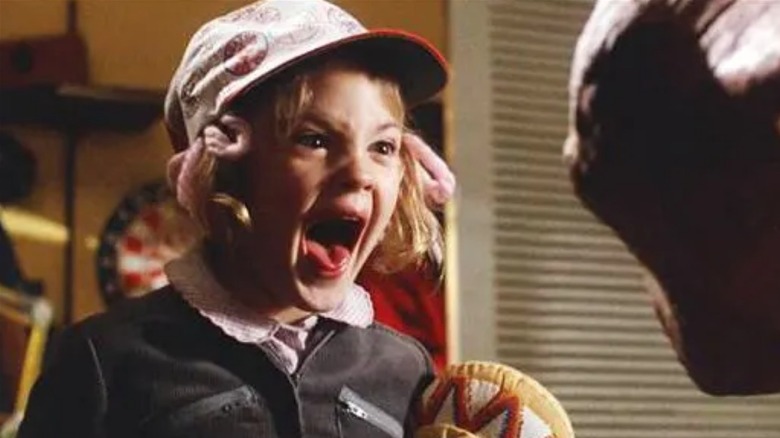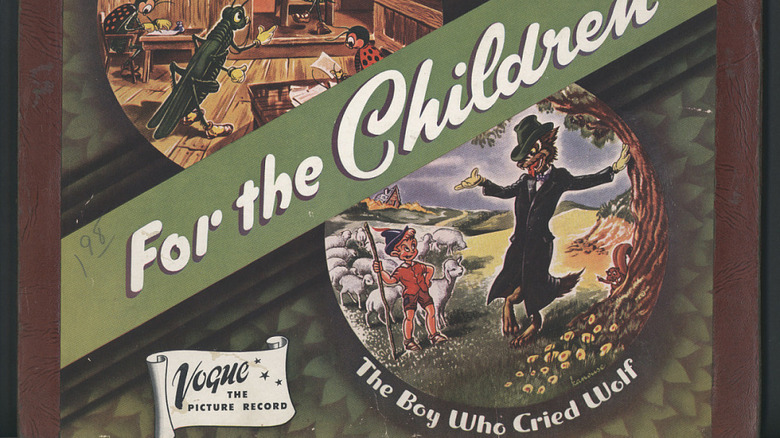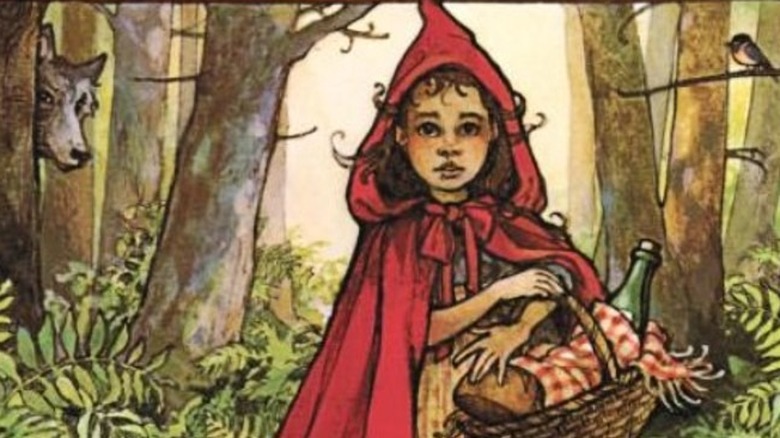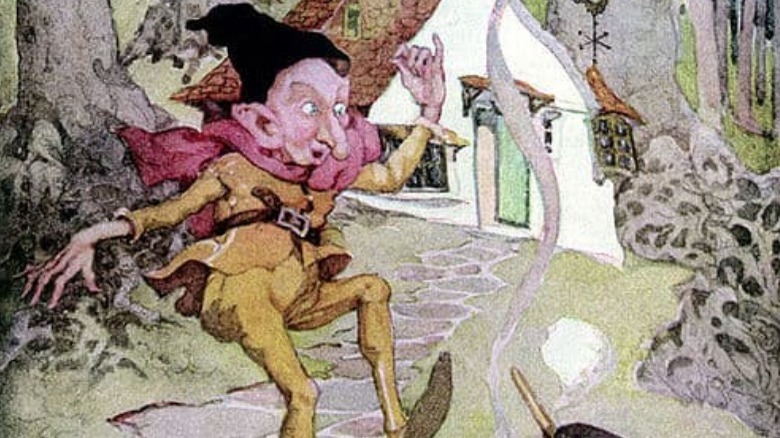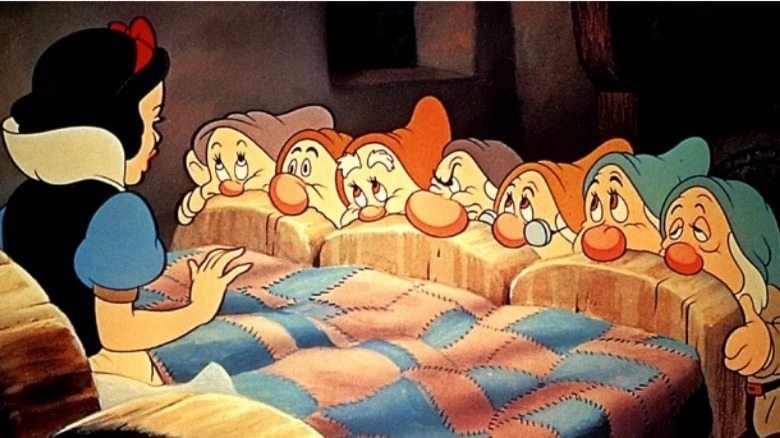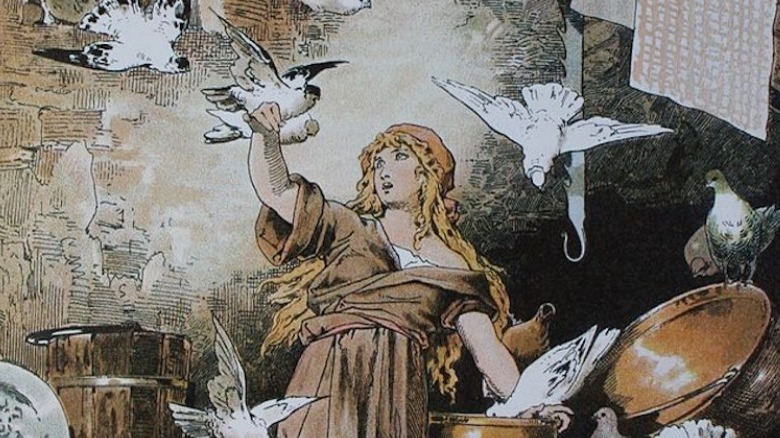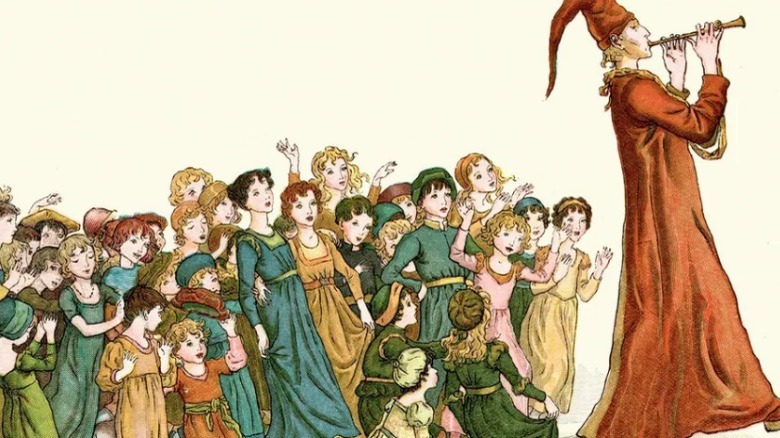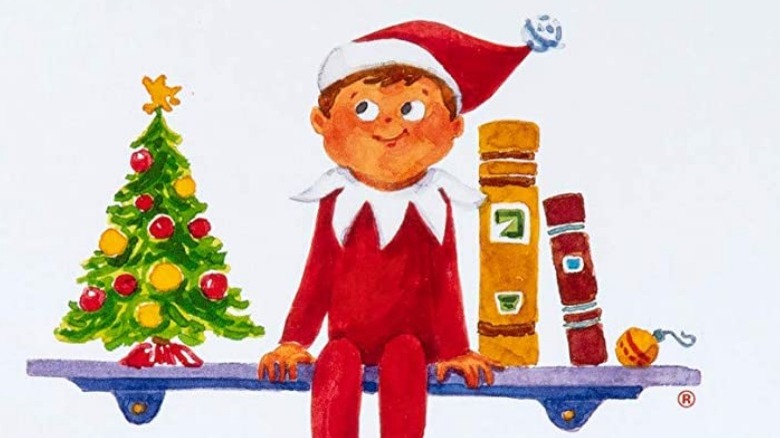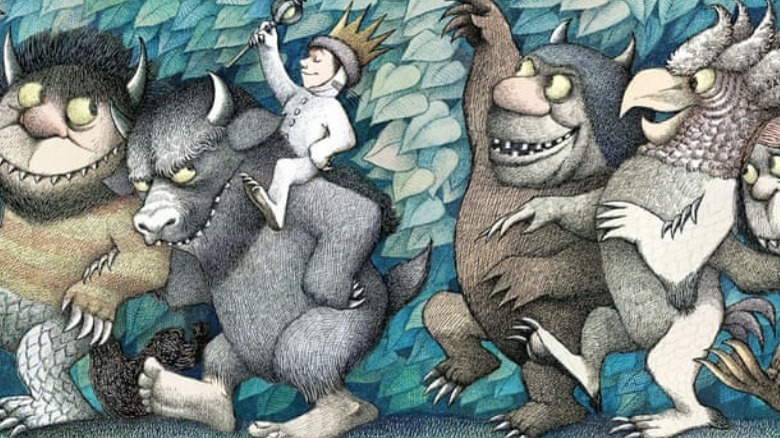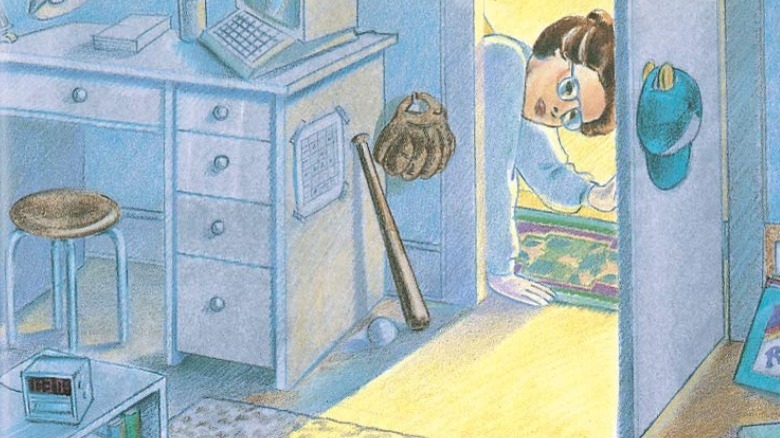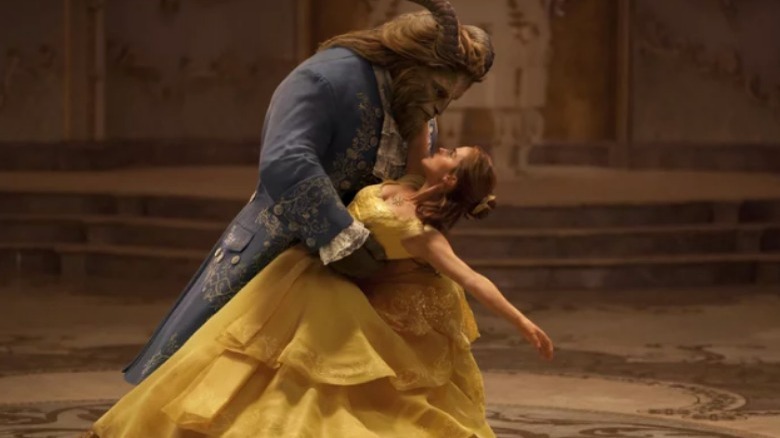Children's Stories That Would Make Great Horror Movies
We may receive a commission on purchases made from links.
There are timeless children's stories that have warmed the hearts of parents and kiddos alike. But for every sugary sweet tale, it's not hard to find just as many that send shivers down your spine. Perhaps it's one you heard as a child that felt a little off. Or maybe you discovered the disturbing origins of your favorite Disney princess as an adult. Whether you've blocked them out of your mind or they haunt you to this day, there are some excellent horror movie concepts to be mined from these fables.
We know Hollywood is always searching for the next big horror franchise. Well, look no further than a handful of beloved children's stories! Some need minor tweaks to push them over the edge, while others are downright horror shows in their original form. From classic fables like "The Boy Who Cried Wolf" to the actual "Little Mermaid" and new books like "The Elf on a Shelf," we've got your upcoming slate of horror flicks that will make your little ones ask to sleep with a nightlight for weeks. Make sure to cut us our ten percent, okay Hollywood?
The Boy Who Cried Wolf
Growing up, we all heard "The Boy Who Cried Wolf" lecture (apologies, story) — as it's parenting 101. If somehow you missed this macabre morality tale, it focuses on a young shepherd boy tasked with watching sheep. He gets bored and decides to play a prank. He cries, "Wolf!" All the villagers run to help him but find the boy laughing. The second night, he falsely screams, "Wolf!" again. Again, the villagers appear to help him. But on the third night, a wolf actually appears. The boy yells, but no one comes. In the original version, the wolf eats the sheep. But in later versions, the wolf snacks on the boy too. Despite the iteration you heard, the ending probably stuck with you as an essential life lesson or made you irrationally afraid of wolves.
We could use the same setup and apply it to a slasher-like formula. Once the wolf discovers no one is coming, it picks off the sheep one at a time. The boy witnesses the sheep brutally shredded and tries running into town but no one helps him. Like a masked killer, the wolf stalks him in the shadows. The young boy finally goes to bed, only to hear a growling downstairs. He slowly opens the door and sees the wolf devouring his dad and charging at him. The movie ends with children crying in theaters, promising never to lie to their parents. You're welcome!
Little Red Riding Hood
In keeping with the wolf-eating children motif, "Little Red Riding Hood" would also make an excellent horror film. There are over 58 versions of this story told around the world. While its details shift slightly, the moral of the story translates across languages. Kids, don't trust strangers — even friendly people (or talking animals) can be evil too.
The story already feels like a horror movie. Little Red Riding Hood happily strolls through the woods to her grandma's house when a friendly wolf inquires where she's going. She tells him the exact location. He stalls her by suggesting Red pick flowers for good ol' granny — giving him time to eat grandma and dress in her clothes. When Red arrives at grandma's house, she notices a few things are off. Luckily, a hunter is in the area and cuts the wolf open. Grandma and granddaughter are still alive! In some versions, the hunter fills the wolf's belly with stones, and when he wakes up, he can't move and dies. (That's some Cronenberg-level body horror if you ask me!) Imagining a child and an elderly lady climbing out of a freshly sliced wolf is harrowing. Seeing rocks placed over organs like a violent life-size version of the Operation game is grotesque for a kid's story. But it makes for a masterpiece in stranger-danger awareness.
If you or someone you know may be the victim of child abuse, please contact the Childhelp National Child Abuse Hotline at 1-800-4-A-Child (1-800-422-4453) or contact their live chat services.
Rumplestiltskin
The "Rumplestiltskin" tale is over 4,000 years old. The story begins with a father bragging to the king that his daughter spins gold out of straw. Of course, the greedy king locks her in a chamber, awaiting his gold bounty. One day a strange little man appears and offers to help her in return for her necklace, so she agrees. The king is so impressed that he demands more gold. This routine continues until the young girl has nothing left to give, so Rumpelstiltskin asks for her firstborn child, and she agrees. The king marries her, and they have a child. All is well until Rumplestiltskin returns. He offers to release her from their deal if she can guess his name. She guesses correctly. Rumplestiltskin is so mad he stomps his foot hard, splitting it in half.
When you unpack the possible origins of Rumplestiltskin, it raises some terrifying questions. Is he a demon, goblin, fallen angel, or a cursed man gone mad? Who else has Rumplestiltskin done this to, and what has he done with other firstborn children? What if this is the final part of a dark and bloody story? Imagine a prequel showing Rumplestiltskin's reign of terror, an underground lair with all the captive children. He uses his magic to transform them into an army of demonic goblins like him. It'd be a darker version of Warwick Davis' "Leprechaun" with a period piece aesthetic fit for Dave Eggers' direction.
Snow White
"Snow White and the Seven Dwarves" was the first of many "Disneyfied" versions of Grimm's Fairy Tales. In Disney's, sure, the Queen wants Snow White dead. But in the original, the Huntsman brings her a boar's lungs and liver, pretending they belong to Snow White, and the Queen eats them. (Yuck!) In the movie, the Queen falls off a cliff — a kid's movie staple for offing villains. But in the grimmer version, she's put into iron boots that have been simmering on hot coals and forced to dance to death.
There's already a horror movie twist called on this, called: "Snow White: A Tale of Terror." In this reimagining, Snow White (named Lilli, played by Monica Keena) is a brat to her stepmother (Sigourney Weaver), whose witchcraft-powered mirror eventually turns the Queen evil. In the original tale, Snow White was only seven years old. Looking at all she goes through from a child's point of view, it's traumatizing — orphaned, sentenced to disembowelment by her stepmother, and married to a Prince she barely knows. Not to mention the Queen's death happens at Snow White's wedding! (What a macabre choice for a reception...) We'd love to tweak the ending and have Snow White break free of the Prince with the help of the Huntsman and escape to the woods. She'd finally be free of others controlling her. In a revenge-style format, she could band together with the seven dwarves and lone Huntsman to free women in similar circumstances.
Cinderella
Another Disney classic with much darker roots is "Cinderella." In Grimm's version, she exhibits powers akin to witchcraft. The Fairy Godmother is a fig tree on her mother's grave that Cinderella waters with her tears. Later, it grants her wishes. The stepsisters take drastic measures to make the glass slipper fit — one sister slices off her toe and the other part of her heel — but the copious amounts of blood give away their deception. To top it off, the stepsisters get their eyes plucked out at the royal wedding by Cinderella's vicious attack birds.
The original tale sounds more like "Carrie" meets "Cinderella," which would make a great horror flick! A young girl practices witchcraft secretly, starting with subtle spells against her evil stepmother and stepsisters. But then, a bumbling yet controlling Prince catches her eye. She sees a way out of her situation. She makes him fall in love with her, driving her step-family mad as they take extreme measures like chopping off pieces of their feet to fit in (grotesque pun intended) and then using her woodland creatures to enact some gnarly revenge. Since the Prince was her ticket out and she never really loved him, after the dust settles, the Prince mysteriously falls ill and dies. Cinderella can then rule over the kingdom, making her evil stepmother and her now-blinded stepsisters her castle maids. Cinderella has everything she could desire: power, independence, and, most importantly, vengeance.
The Pied Piper
The town of Hamelin, Germany, hired the Piper to solve their rat infestation. The Piper played his magical flute and led the rodents out the gates to their unseen demise. When the townspeople refuse to pay him, the Piper lures their children away forever. The moral of the story (we guess) is don't forget to pay your independent contractors! The fable oozes with horror tropes — from the rodent invasion to the flute's devilish magic. But there's more truth to this story than one might expect.
According to BBC, this story is based on a historical event. An inscription on the Pied Piper house reads: "A.D. 1284 – on the 26th of June – 130 children – born in Hamelin – were led out of the town by a piper wearing multicolored clothes – they disappeared forever." Scholars guessed this may be referring to the 13th Century Children's Crusades, an outbreak of dance mania where children literally danced themselves to death, or local Monasteries recruiting children. But no one knows what happened on that fateful night.
What if, in the present day, the Piper seemingly returns? A local investigative journalist races the clock to discover what happened centuries ago to save a new generation of children. Flashing back and forth in time as the mystery unravels, it could have a "Candyman"-like reveal. But you'll have to watch the movie. We don't want to spoil our hypothetical ending!
If you or someone you know may be the victim of child abuse, please contact the Childhelp National Child Abuse Hotline at 1-800-4-A-Child (1-800-422-4453) or contact their live chat services.
The Elf on the Shelf
In 2005, "The Elf on the Shelf: A Christmas Tradition" book hit stands and inspired a global brand with toys, clothing, and movies. The keepsake set comes with the book and an Elf doll your child gets to name. The idea is that Santa sent this as one of many Scout Elves. Every night, the Elf scurries off to the North Pole to report if the child was naughty or nice and reappears in a different hiding spot the next day. Kids behave better, while mommy and daddy have to remember to re-hide the dang Elf every night. Sounds innocent enough, right?
Santa's Elves are the epitome of nice, happily reporting on their assigned children's misdeeds. But what if one Elf has been saddled with a naughty kid that never learns? Year after year, his parents allow him to misbehave, and he never changes. Santa grows frustrated with this particular Elf's work ethic, and passive-aggressively thinks he's a failure. This bratty kid is now a teenager, and the Elf has been tossed in the attic, forgotten. One Christmas, he returns to seek revenge. The Elf appears at school in his locker. Next to him when he wakes up. The teen thinks his parents are pranking him until the Elf escalates its attacks from the psychological to the physical, and it becomes a full-on slasher flick. Imagine Chucky with an Elvish twist.
Where the Wild Things Are
"That night Max wore his wolf suit and made mischief of one kind and another..." is the opening line of the classic children's book "Where the Wild Things Are" by Maurice Sendak. His parents send Max to bed without supper, so he travels far away to have a rumpus with other entities called Wild Things. But soon he realizes he misses his family. The "things" in the book (also illustrated by Sendak) are iconic, frightening, and playful simultaneously. The Guardian reported the book was loosely based on Sendak: "Maurice revealed that he too sometimes went to bed without any supper, but for a very different reason -– he hated his mother's cooking!"
The Wild Things have a fun and spooky design. With lines like "Oh, please don't go—we'll eat you up—we love you so!" it's not hard to imagine a darker twist. After the book's events, Max goes to bed and finds the beasts have returned to make due on their promise of forever friendship. Having been starved of Max's love, they tear through his house, hoping to drag him back to their jungle. If he doesn't go, they'll eat him. Max runs out of his house, unleashing the monsters on his unsuspecting neighbors. Mayhem ensues! Sure, it's blasphemous to turn a childhood classic into a gory monster movie, but we'd watch it!
Love You Forever
"Love You Forever" is a sweet mother-son book by Robert Munsch. The story follows a mom's relationship with her son from birth to adulthood. No matter how old he gets, she sneaks into his room and sings, "I'll love you forever, I'll like you for always, as long as I'm living, my baby you'll be." Towards the end of the book, the mother is too old and sick, so the son goes to her. The son holds his ailing mother in his arms and sings the same song to her. He then goes home to his baby, holds her in his arms, and continues the tradition.
We don't want to discount the book's sweet intentions about a mother's never-ending love. However, this mom's love is extreme. At one point, she drives across town to her grown adult son's house, climbs a ladder, and sneaks in his window to rock him. When he was a kid, her commitment was endearing. Yes, it's a little strange when he was a teenager, but it's downright creepy when he's an adult. What if a date had spent the night? How would they react to his mother sneaking in the window? With a minor tweak to this adorably clingy tale, this mom's behavior would get intrusive quickly. Imagine a movie from a fiance's perspective as her husband tells her about his mom's weird quirk. Talk about a nightmare mother-in-law!
The Giving Tree
"The Giving Tree" is a profoundly melancholy book about a young boy and a tree happily playing together. Complications to their worry-free paradise arise as time passes between the boy's return visits. The boy ignores the tree for his girlfriend, asks for its apples to sell, takes all the branches to build a house, and finally removes its trunk to build a boat. Only to return old and tired to sit on the small stump that remains. The tree is "happy" to have the boy back, but at what cost?
As kids, the tree seemed so loving and selfless. The tables flip when you're an adult. Suddenly the themes of aging, the unnoticed selflessness of being a parent, and the cruelty of time and adulthood are very apparent. Anthony Ford analyzed the themes for The Observer, stating, "When we see the aging boy's loss of his childhood happiness and the tree's longing to regain it, we encounter the loss intrinsic to life and long for the place where wholeness awaits. We are both the boy and the tree." Like A24's "A Ghost Story," it's not hard to imagine this as an intense psychological horror film. This tree regrows over time, only to meet a new young child fated to grow up and takes everything from it until nothing remains — a never-ending cycle of neglect and disregard for nature's gifts. While not a traditional horror movie, it could send some parents into an existential crisis.
The Little Mermaid
Few movies are more iconic than Disney's animated film, "The Little Mermaid." However, the original Hans Christian Andersen version was far bleaker. Ariel's love for the Prince is unrequited, and walking on her human legs causes stabbing pain. Unfortunately, the Prince is highly entertained by her dancing, so Arie. performs for him in agony. The Prince marries another woman and discards the mermaid. Ariel's sisters tell her that if she stabs him with a magic dagger, she'll turn back into a mermaid when his blood hits her legs. She can't go through with it and decides to drown herself instead. (Yikes!)
Dr. Oliver Tearle dissected the original ending for Interesting Literature, saying: "The rather more bittersweet ending is more mature and realistic: we cannot make people love us if they do not, and we have to live with that fact. The best we can do is to act well towards them, and to the world at large."
Sure, that is one way to read it, but it's also a stark examination of misogyny. Ariel, a mermaid, is deemed soulless and subhuman. Her voice is quite literally taken from her. Her legs cause her immense physical pain, but the Prince neither notices nor cares. After all this, she still sacrifices herself instead of killing who stole her sense of self in the first place. There's no need to add any twists as that's already a horror movie. In this dreadful light, the moral shines: If you need to change yourself entirely for someone to love you, that's not love. That's abuse.
If you or someone you know is dealing with domestic abuse, you can call the National Domestic Violence Hotline at 1−800−799−7233. You can also find more information, resources, and support at their website.
Beauty and the Beast
"Beauty and the Beast" was the first animated feature nominated for Best Picture. A timeless classic, the film follows an intelligent and resourceful young woman who falls captive to a savage beast. They eventually fall in love, the town bully dies, the curse is broken, and all the sentient silverware become humans again. While there have been several iterations of this story, you might find it hard to believe it's partially based on an actual couple — another example where the truth is far stranger and more terrifying than fiction.
History vs. Hollywood uncovered the basis for the Beast: "Petrus Gonsalvus, suffered from a genetic condition known as hypertrichosis — defined by an abnormal amount of hair growth on any part of the body." As a boy, Petrus was sent to King Henry II, who wanted to raise him to be a "civilized human." After the King's death, Petrus became the property of Henry's widow, Catherine de Medici. She arranged a marriage between Petrus and a young woman, coincidentally also named Catherine. Medici wanted to see if the condition would be passed down. Out of their seven children, four had hypertrichosis. The four children and their father were paraded around the countryside as a spectacle.
The horror here is the inhumane depths of prejudice. For a fun twist, what if Petrus didn't die? Instead, he attacks the people who used him as entertainment. Picture Wolfman giving horror fans a bloody good show.
